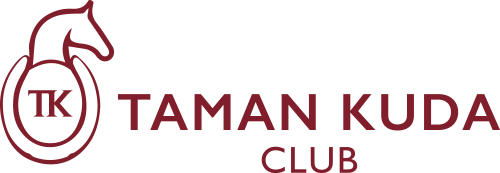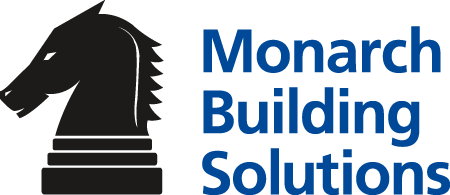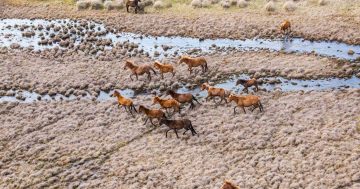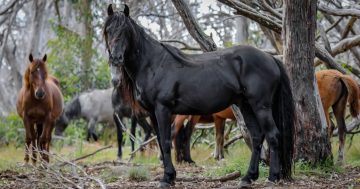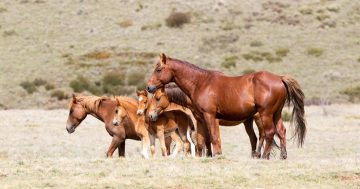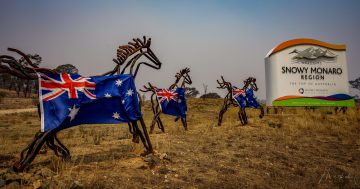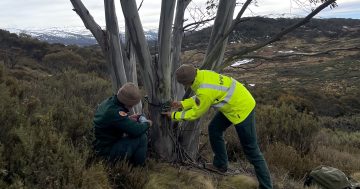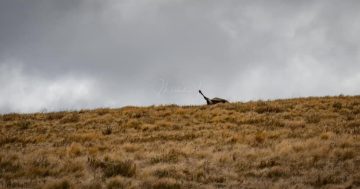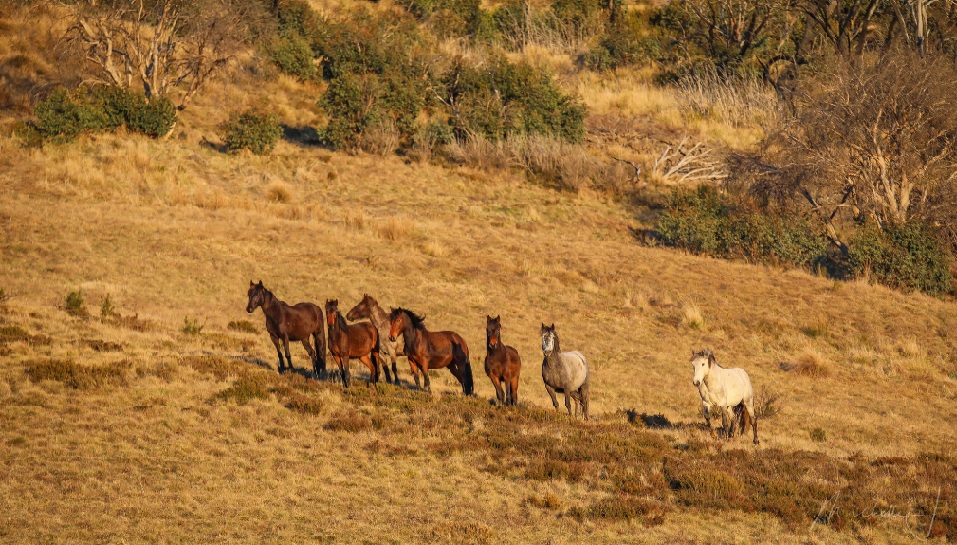
Thermal imaging was used for the first time by the NSW Government to survey wild horse populations in Kosciuszko National Park last year. Photo: Supplied.
A trial using thermal imaging technology to count wild horses in Kosciuszko National Park (KNP) has yielded population estimates closely aligned with those obtained through traditional aerial survey methods.
Conducted by the NSW National Parks and Wildlife Service (NPWS) between October and November 2024, the new survey, which used thermal cameras mounted on helicopters, estimated 2977 wild horses, or brumbies, across four blocks in the park.
That figure is strikingly close to two other estimates gathered at the same time using different techniques: 2793 horses based on visual counts analysed with standard distance sampling, and 3885 using a more complex model called mark-recapture.
The findings were released in a report by the NSW Department of Climate Change, Energy, the Environment and Water (DCCEEW) in February 2025. They were peer-reviewed in June before being publicly released last week.
It marked the first time the NSW Government had employed thermal cameras for monitoring the wild horse population in KNP.
According to the DCCEEW report on the NPWS trial, two cameras were mounted on both sides of a helicopter. They recorded footage during the same flights as the visual surveys, allowing for a direct comparison over four of the park’s designated management blocks: the Northern Block, Snowy Plains, Cabramurra Block and Southern Block.
These regions are known hotspots for horse activity.
Flights were conducted within three hours of dawn or dusk, when horses are deemed most active, maximising detection rates.
After each flight, two trained observers independently reviewed the thermal footage.
The Northern Block, covering 1229 square kilometres at the northern end of the park, recorded an estimated 1393 horses. (In February 2024, a crowd-funded high-tech survey of the Northern Block used high-resolution imagery captured from fixed-wing aircraft, combined with advanced machine learning and artificial intelligence software, to identify 569 horses.)
The Snowy Plains Block, a central-eastern area spanning 161 square kilometres near the Eucumbene River, saw 164 horses detected.
In the Southern Block, which spans 1146 square kilometres toward the Victorian border, the survey identified 1420 horses.
The Cabramurra Block, a smaller 139 square kilometre area in the park’s west, returned no horse sightings in either the thermal footage or human observations and was excluded from the final population estimate.
According to the report, thermal camera counts were generally lower than estimates from the more complex mark-recapture method, though results varied between regions.
In the Southern Block, thermal estimates exceeded some human counts, while in the Northern Block, observers recorded more horses than the cameras detected.
However, the report noted that the presence of helicopters may have caused horses to move or hide before being captured on thermal footage – a behaviour known as flushing – which could result in undercounts.
The report has suggested quieter technologies, such as electric drones, may be more suitable for future thermal surveys.
The 2024 surveys have shown a dramatic decline in wild horse numbers compared to the previous year.
The 2023 estimate put the population at around 17,393 horses across the park, compared with the 2024 range estimate of 1579 to 5717 horses.
The reduction follows the removal of over 6000 horses through a combination of trapping, rehoming and aerial shooting in the 12 months prior to the latest count.
Overall, the NSW Government has removed around 9000 wild horses from KNP since November 2021.
The lower population figure places the government ahead of its legislated target to reduce numbers to 3000 horses by mid-2027 under the Kosciuszko Wild Horse Heritage Management Plan (KWHHMP).
A full technical report detailing the survey and analysis methods is expected to be released later this year.



